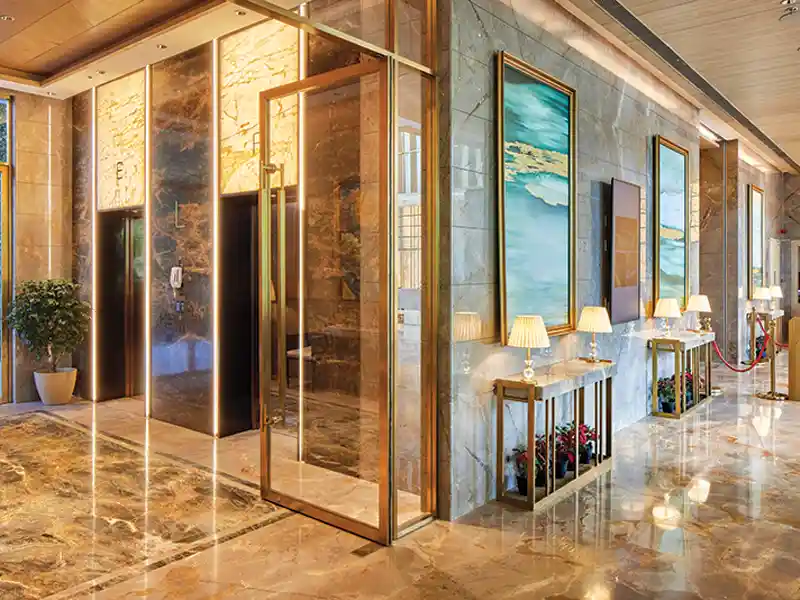When designing an upscale clubhouse, it’s crucial to ensure the right proportions, scale, and sizes for each space. The primary focus, naturally, is the design, which needs to tell a continuous story throughout the entire space.
Khushboo Khandelwal - Principal Architect, Studio Design Inc
Light—both natural and architectural—is also key for visual connectivity and environmental graphics. You want light to come indoors in a way that isn’t too harsh but keeps the spaces well-lit. Using screens to filter light is an important aspect; it softens the light and can create interesting shadow patterns that add drama.

Architectural lighting should be subdued and focused on specific areas. For example, a gym needs generic lighting for the whole space, but focused lighting on certain equipment helps with optimal and safe use.
A yoga space, on the other hand, should have softer lighting that enhances the essence and holistic feel of the space. Decorative lighting is useful in public areas like lobbies, seating areas, and cafeterias, but it’s best avoided in areas where functionality is key. Furnishings need to balance privacy and practicality, especially in high-traffic areas where maintenance is a challenge. Materials should be simple and easy to maintain.

Environmental graphics play a vital role in clubhouse design, creating a thread of connectivity that links the entire space aesthetically. Adding inspirational elements to simple signage can enhance the visual connection between signs and the areas they represent. It’s important to avoid being too graphic or loud so that each element contributes to the overall design story of the clubhouse.
Project Images: Crystal Spires by Studio Design Inc
Photo Credits: PHX India
















